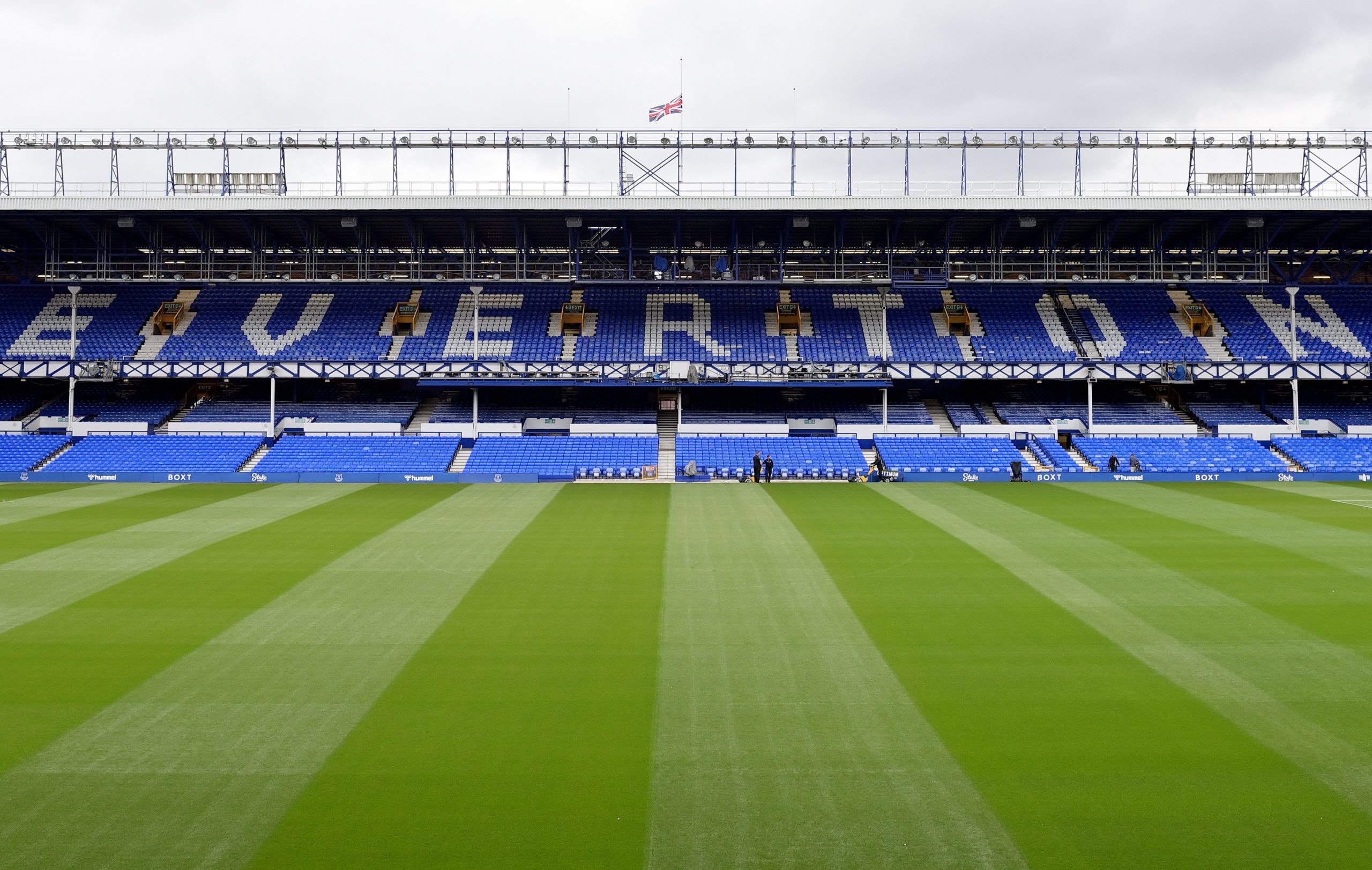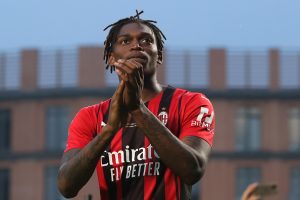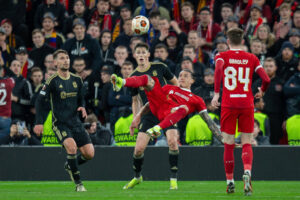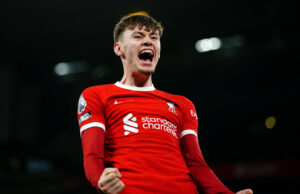The 2021/22 season saw Everton fall into an unexpected relegation battle, following a solid period of top-half and mid-table finishes in the Premier League dating back to the 2004/05 campaign. The Toffees managed to survive the perils of last term, finishing just four points above the relegation zone when all was said and done. Despite securing safety, it’s not all over for Merseyside club, as another tough season looks to be in store. So where did it all go wrong for the club that once looked to be on the verge of breaking into the top six?
How Everton Spent Their Way to the Bottom
Home. pic.twitter.com/CsGoaU9Xg7
— Everton (@Everton) September 18, 2022
The Recent History of Everton
The latest rise of Everton began with the appointment of manager David Moyes, who at the time had only managed Preston North End in what is now League One and the Championship. Moyes had an immediate impact and guided the club to an impressive seventh-placed following a 15th place finish the season prior when the Scotsman replaced former manager Walter Smith. However, the Toffees narrowly avoided relegation in the 2003/04 term as they finished 17th.
From then on, however, the club surged up the table and didn’t look back. They finished the 2004/05 season in fourth place, which is still their highest-ever finish in the Premier League. This saw Everton have the opportunity to play in the Champions League. Success in the competition was not to be, however, as they suffered an agonising defeat against Villarreal thanks to a controversial decision to disallow an Everton winner.
On the domestic front, Everton were looking to replicate their prior season’s success in the 2005/06 campaign. Unfortunately, the Merseyside club instead struggled and slipped back down the table, finishing in 11th place.
For the next seven seasons, Everton almost became the embodiment of consistency, as the club never finished lower than eighth, even managing to play in what is now known as the Europa League on a few occasions also. The club were in great hands with Moyes at the helm and fans were happy not to have any more relegation worries. In Moyes, the club looked like they had found their man and the outfit was experiencing the kind of success that hadn’t graced the blue side of Merseyside since the 1980s.
Unfortunately for them, Manchester United were looking to replace their own Scottish manager and Moyes just happened to fit the bill. Moyes left Everton for United after the retirement of the legendary Sir Alex Ferguson, taking charge at Old Trafford from the beginning of the 2012/13 season. The return to the North-West didn’t end well for Moyes however, as he was sacked after only 10 months in charge.
The Post-Moyes Era
In turn, this left Everton looking for a manager for the first time in over a decade. The man they turned to was Spaniard Roberto Martinez who had just impressively won the FA Cup with Wigan Athletic. Wigan were also relegated from the Premier League in the same season and so there were concerns over his appointment, however, the Spaniard had a solid first season at Goodison Park, finishing in fifth place. A couple of disappointing campaigns followed and Martinez was sacked less than two terms into his reign.
Throughout this period of relative success for Everton, David Moyes and Roberto Martinez were operating on a very tight budget, with the club consistently spending small amounts in the transfer market. Their signings would be headlined by players such as Nikica Jelavic or Diniyar Bilyaletdinov or James McCarthy. Whilst they may be serviceable players, they are not the calibre of players that would have helped the Toffees reach the next level.
The biggest outlier is Romelu Lukaku, who Everton bought for relatively big money from Chelsea in 2014 following a successful loan spell in Merseyside. Lukaku enjoyed a successful spell at Goodison Park, scoring 87 goals in 166 appearances, earning himself a move to Manchester United after four seasons at the club.
In 2016, while Lukaku was still scoring goals at Goodison Park, the dream of further investment became a reality, as former businessman Farhad Moshiri bought a majority stake in the football club. The new owner promised to spend money on improving the squad with an aim of taking Everton to the next level.
Everton certainly spent money but unfortunately, the results were not quite as expected.
Coming from the long-standing reign of Moyes, Everton fans were used to stability on the touchline. Moshiri however has been an ambitious owner to say the least and removed several managers from their position when results didn’t go to plan. The Moshiri era so far has seen seven managers take charge at Goodison Park, potentially running the risk of creating an unstable environment for players.
Six years in charge, five managers and two DoFs hired, £500m+ spent…
But no progress made by #EFC under the ownership of Farhad Moshiri.
📝 @OliverKayhttps://t.co/CduHmhgQMX
— The Athletic | Football (@TheAthleticFC) January 17, 2022
The Toffees Spend Big
Yet at the same time, Everton have been spending amounts of money that was previously unheard of at the club. Since Moshiri took charge the Toffees have spent over half a Billion pounds on players but sadly have not achieved the success that clubs spending that sort of money tend to experience.
The highest position the club have finished in this time was seventh with Ronald Koeman back in the 2016/17 campaign. The club has since steadily declined to the point that they find themselves in today, which is narrowly staving off relegation. A semi-resurgence looked to be on the cards following the 2020/21 season in which Carlo Ancelotti managed a 10th place finish, however, all hope was seemingly lost after Ancelotti departed in the summer to take charge at Real Madrid.
The lack of footballing returns from such a large spending spree is something that the decision makers at the club need to be held accountable for. Poor recruitment seems to be the major factor when looking at the Toffees’ downfall as the money has certainly been spent. Moshiri and his ever-changing teams of executives have failed to secure a return on player expenditure that can be called anything close to consistent.
Some of the failed transfers since Moshiri took over don’t look too pretty. Yannick Bolasie for £26 million, Morgan Schneiderlin for £24 million, and Jean-Phillipe Gbamin for £22 million are standouts for all the wrong reasons. The list goes on, however, as the £550 million spent on players during those years have bared little fruit in the way of performances on the pitch.
Ironically, some of the best business for the Toffees in recent years has also seemingly been some of their shrewdest. Striker Dominic Calvert-Lewin was signed for only £1.5 million from Sheffield United and current stand-out man Anthony Gordon is a product of the club’s own academy.
Looking back, Everton fans would be forgiven for missing the days of penny-pinching for the right players instead of throwing big money at anyone and everyone.
Past Season’s Problems
The 2021/22 season started with arguably one of the club’s biggest mistakes in recent memory when they hired former Liverpool manager Rafa Benitez as their new manager following the departure of Ancelloti. The Spaniard, who won the Champions League with the Toffees’ Merseyside rivals, had previously called Everton a “small club” when in charge at Anfield, which is not something that would have easily been forgotten by fans. To top things off the club was unable to spend in the transfer window at the start of the season due to the over-spending in previous years. Among the influx of free transfers, winger Demarai Gray was the only player arriving at the club with a transfer fee and even then the fee was £1.7 million.
The Benitez era didn’t get off to a good start and things only got worse from there. The Spaniard only managed to win 32% of his games and was therefore relieved of his duties on January 14, 2022. The Toffees eventually turned to former Chelsea man Frank Lampard but the damage from Benitez’s rain was already done. France international full-back Lucas Digne had a well-documented bust-up with the manager that resulted in his sale to Aston Villa just days before Benitez’s departure. The fullback was one of their better players and it was at a time the squad was desperate for quality.
The club was rewarded for the change in manager as Lampard helped secure survival with some backing in the transfer market during the January window. While the club survived the drop into the Championship, it was not enough, however, to retain one of the club’s best players as Brazil international Richarlison departed for Tottenham Hotspur after the season concluded.
Everton survive!
Frank Lampard says he feels "very proud" after his side made an "incredible" comeback to beat Crystal Palace and secure their Premier League status on Thursday night.#BBCFootball #efc
— BBC Sport (@BBCSport) May 20, 2022
Where Is the Club Heading Now?
What’s next for Everton is unknown. They currently sit in 13th place with seven points from seven games played in Premier League. Nevertheless, Frank Lampard seems to have taken more control over transfers and Everton made some smart additions to their squad that seem to fit a project, as opposed to the previous method of overspending on other club’s cast-offs.
After a rocky near-decade following the departure of Moyes, Fans will be hoping for stability to return to the club. Another season of fighting for their spot in the top-flight seems to be on the cards but a strong start to the campaign looks to have settled the nerves somewhat and shown that Lampard might be up to the task. Ensuring their Premier League status will be the first order of the day but close behind will surely be fixing the financial mess that years of overspending on mediocrity has created.
As football has proved time and time again, no club is too big to fail.






